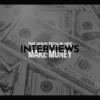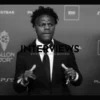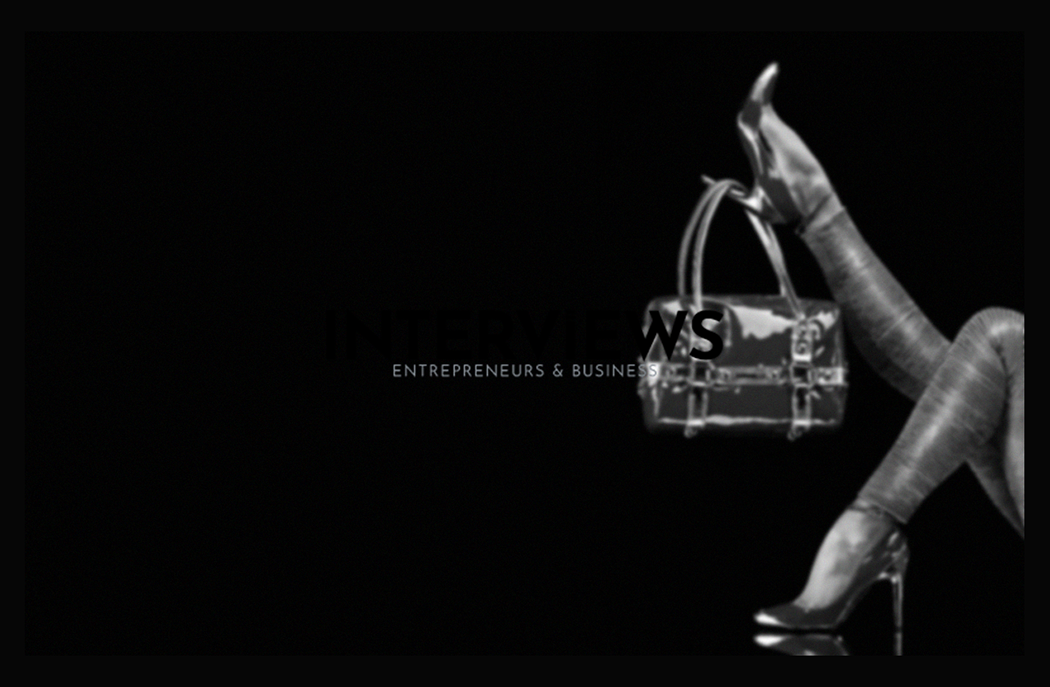So, You Want to Launch a Luxury Clothing Brand? Buckle Up!
Entering luxury fashion requires grit and cash. Think of it as a dive into the designer pool. If you have the vision, drive, and maybe a little wealth, let’s explore turning that dream into reality.
The Cold, Hard Cash: What Does Starting a Luxury Brand Actually Cost?
Let’s talk numbers. Starting a luxury clothing brand is pricey. Entry costs range between $25,000 and $50,000, but that might only scratch the surface. Let’s see where your funds go.
Initial Investment: Setting the Stage for Style
- Branding & Marketing: Show You’re the Real Deal First impressions matter. A strong brand identity is vital. Logo, website, stunning pictures, and social media presence demand investment.
- Legal & Business Structure: Adulting is Mandatory Registering your business requires permits and licenses. Get your legal matters sorted. An LLC provides protection from liability.
- Production: From Sketch to Showstopper
- Raw Materials: Forget Polyester Luxury means high-quality fabrics and trims. Spoiler: they cost more.
- Manufacturing Costs: Skilled Labor Knows Their Worth Hire skilled hands to bring designs to life. Good craftsmanship is not cheap. Cutting corners will hurt your brand.
- Sample Development: Prototyping Perfection Samples help refine designs. Each prototype costs money, especially when aiming for high quality.
- Inventory: Stocking Up on Style Selling requires stock. Yet luxury inventory is a major investment. Balance is key to avoid tying up funds.
- Website & E-commerce: Your Digital Storefront Your website must shine. It should reflect your luxury brand. Development and upkeep are part of your costs.
- Packaging: Unboxing Experiences Luxury packaging enhances brand experience. It’s an investment in perceived value.
Ongoing Costs: Keeping the Luxury Engine Running
- Marketing & Advertising: Stay on the Radar Marketing is a marathon. Paid ads and PR efforts are crucial for keeping visibility. Stay in touch with your clientele.
- Operations: Logistics Are Key Warehouse space, shipping, and customer service all incur costs. They ensure a smooth customer experience.
- Staff: Assembling Your A-Team Designers and sales staff who charm customers are vital. Talented people command suited salaries.
- Inventory Management: The Art of Demand Manage inventory smartly. Avoid both stockouts and piles of unsold items.
- Rent: The Physical Store A physical store has prestige and high rent. Factor this in if you want a brick-and-mortar space.
Cost-Increasing Factors: Your Choices Impact Budget
The final cost is flexible based on key decisions:
- Product Offerings: Starting small or wide impacts costs.
- Production Process: Handmade versus mass production affects expenses.
- Target Market: Wealthy individuals have different demands. Know your audience to shape your brand.
- Branding Efforts: Simple branding or complex experiences will change your budget.
Building a Brand That Screams “Luxury”
Creating a luxury brand is about crafting desire, not just a logo. Martin Roll offers five steps to consider.
- Target Audience: Get Specific “Identify your target market.” Are you aiming for Gen Z billionaires or discerning diplomats? Know what they desire.
- Differentiation: Stand Out “Do things differently.” Find what makes your brand unique, be it design or craftsmanship. Polish this edge.
- Status Symbol: Become Elite “Become a status symbol.” Luxury often signals wealth. Your brand must convey success.
- Exclusivity: Create Demand “Create exclusivity.” Limited editions induce desire. Those factors can boost demand.
- Brand Promise: Deliver Without Fail “Always exceed expectations.” Luxury customers expect quality. Keep interactions with your brand impeccable.
- Brand Consistency: Maintain Polish “Generate a consistent brand image.” Luxury brands excel from day one with their visual and messaging identity.
Launching Your Luxury Line: From Vision to Runway
You have the blueprint. Now it’s time to launch. Think of it as a fabulous debut.
- Niche Down: Be Specific in Your Market “Focus on a niche in luxury.” Trying to cater to all is risky. Specialize, whether in sustainable outerwear or minimalist evening wear.
- Brand Identity: Your Unique DNA “Establish a unique identity.” It’s your personality and values that stand out in a crowded marketplace.
- Quality & Craftsmanship: No Compromises “Provide exceptional quality.” Luxury thrives on quality. Every aspect of your product must be perfect.
- Customer Experience: Treat Clients Like Royalty “Prioritize customer service.” Luxury is also about experiences, not just items. Make every touchpoint special.
- Target Affluent Customers: Understand Their Desires“Focus on wealthy clientele.” Their needs shape your approach and marketing.
- affluent customers appreciate exclusivity. Luxury is not universal, and that is crucial. Focus on those who can afford luxury and who see its value. Highlight exclusivity, quality, and status in your marketing efforts.
- Marketing & Branding: Proclaim Your Chicness (Figuratively) “…invest in marketing to distinguish your business.” Avoid being a secret. Invest wisely in marketing and branding. Get your name and exquisite products out to your audience. Use targeted campaigns, partner with luxury influencers, and sprinkle traditional ads in upscale magazines.
Brand and Business Plan: Your Path to Wealth (and Runway Shows)
- Define Your Niche: “Define Your Niche: Identify your audience, their needs, and the style you offer.” Seriously, we can’t emphasize niche enough. It’s crucial!
- Create a Unique Brand Identity: “Create a Unique Brand Identity: Develop a name, logo, and aesthetic appealing to your market.” Think about the vibe of your brand. Is it classic, edgy, or chic? Your identity should convey it without words.
- Develop a Business Plan: “Develop a Business Plan: Outline goals, strategies, and financials.” In luxury, a great business plan is vital. Outline your goals and strategies including marketing, sales, and financial details.
- Choose a Business Structure: “Choose a Business Structure: Decide on the legal structure of your enterprise.” Consider LLC for liability protection; it is usually the best choice.
- Create a Financial Plan: “Create a Financial Plan: Determine budget, pricing, and funding sources.” Luxury means smart spending. Create a thorough financial plan. Budget, pricing, and funding must be well understood.
Design and Develop Your Collection: From Muse to Must-Have
- Refine Your Design Skills: “Refine Your Design Skills: Whether experienced or new, continually enhance your skills through learning and practice.” Never cease improving. Luxury design evolves constantly.
- Source Fabrics and Materials: “Source Fabrics and Materials: Find high-quality fabrics that match your brand.” Sourcing fabric is essential. Research suppliers who provide the top-quality materials your luxury brand demands.
- Develop Your Collection: “Develop Your Collection: Create garments that are stylish and functional.” Luxury should be beautiful yet wearable. Develop a cohesive collection embodying your customer’s lifestyle.
- Consider Production Methods: “Consider Production Methods: Determine whether to produce in-house, outsource, or use both.” Whether in-house or outsourced, each method has pros and cons regarding cost, control, and quality. Choose carefully.
Establish Production and Manufacturing: Making It Real (and Flawless)
- Find a Reliable Manufacturer: “Find a Reliable Manufacturer: Research to find one that meets your quality needs.” Your manufacturer helps bring your vision alive. Choose them wisely. Quality and reliability must be non-negotiable for luxury.
- Manage Production: “Manage Production: Supervise the process for quality control.” Don’t delegate and leave it. Keep a close watch on production to ensure quality and meet deadlines.
- Develop a Sourcing Strategy: “Develop a Sourcing Strategy: Create a plan for sourcing materials.” Sourcing goes beyond finding suppliers; it involves crafting a sustainable and ethical strategy in sourcing.
Market Your Clothing Line: Letting the Right People Know
- Build an Online Presence: “Build an Online Presence: Create a website and social accounts for showcasing your brand.” Your online presence acts as your digital flagship. Make it stunning and easy to navigate.
- Develop a Marketing Strategy: “Develop a Marketing Strategy: Plan to reach your audience via various channels.” How will you connect with luxury consumers? Create a targeted strategy using suitable channels to reach them.
- Build Relationships: “Build Relationships with Influencers and Retailers: Partner with fashion bloggers and retailers to enhance visibility.” Influencers and high-end retailers are strong allies. Collaborate strategically to expand your reach.
- Consider Public Relations: “Consider Public Relations: Seek press coverage to build media relationships.” Getting featured in Vogue is priceless. PR is critical for boosting brand prestige.
Sell Your Clothing Line: Cha-Ching! (We Hope)
- Set Pricing Strategy: “Set Pricing Strategy: Establish the price based on costs and market positioning.” Luxury pricing must reflect costs and market expectations delicately.
- Choose Your Sales Channels: “Choose Your Sales Channels: Decide whether to sell online or in stores.” Online-only, physical stores, or both? Think about your strategy and audience when selecting sales channels.
- Manage Inventory: “Manage Inventory: Create a system for tracking your goods.” Inventory management may not sound exciting but is key for profitability; avoid stockouts or clearances.
- Provide Excellent Customer Service: “Provide Excellent Customer Service: Ensure a positive experience for customers.” Exceptional customer service is expected in luxury; exceed expectations to create loyal fans.
Branding for the 1%: Evoking Exclusivity, One Logo at a Time
Luxury branding is an art form. It conveys sophistication without speaking. Here’s the cheat sheet:
- Brand Name: Evoke “Luxury” “Choose words that imply exclusivity and sophistication for your brand name.” Think refined, international names that are slightly mysterious. Avoid overly trendy or pedestrian options.
- Brand’s Core Values: What Do You Represent? “Consider core values that make you unique in the market.” What defines your brand? Sustainability? Timelessness? Your core values must guide all aspects of branding.
- Logo: Less is Often More Luxury logos often whisper instead of shout. Some elements discussed by Ramotion:
- Monograms: “Monograms are logos that use letters to form initials.” Refer to iconic brands like Chanel, Gucci, Louis Vuitton; they are easily recognizable.
- Minimalism: “Minimalism can create significant impact.” Clean lines, simple fonts denote elegance and power in luxury branding.
- Line Work: “Line work adds sophistication to logos.” Delicate lines can enhance artistic elements of your logo.
- Emblems: “Emblems communicate tradition and exclusivity.” Crests symbolize heritage while conveying uniqueness.
- Serif Fonts: “Serif fonts evoke elegance and history.” They often signify refinement necessary for luxury brands.
- Script Fonts: “Script fonts provide personality but should be minimal and sophisticated.”
Marketing Luxury: It’s More than Ads, It’s an Experience
Luxury marketing isn’t talking shouts about deals. Instead, it crafts experiences that build desire while reinforcing exclusivity. Marketing expert Pam Danziger developed the 4 Es of luxury marketing. Let’s explore them:
- Experiences: “That’s why Danziger identified the 4Es of marketing: experiences…” Luxury involves experiences. Think exclusive events and personalized shopping that inspire belonging.
- Everyplace: “…everyplace…” Luxury brands must exist where their audience is—online and offline. Engage them through high-end magazines, exclusive events, and digital platforms.
- Exchange: “…exchange…” Luxury marketing entails a two-way exchange. Build customer relationships; understand their desires.
- Evangelism: “…and evangelism.” Convert customers into brand advocates. Luxury thrives on word-of-mouth and the aspirational nature of loyal clientele.
Storytelling: Weaving Desire’s Narrative
Luxury brands thrive on storytelling. It’s how you connect with buyers emotionally while justifying premium prices.
- Emotion:“Luxury brands utilize storytelling… curating emotional connections…”
- journey that evokes emotion… Luxury often relies on emotion. Tell stories that resonate with your audience. Share tales of heritage, craftsmanship, or the transformative power of your garments.
- Trust: “…builds trust…” In luxury, trust is vital. Your brand story should show your values and commitment to quality. Authenticity is key.
- Reinforce Exclusivity: “…and reinforces the exclusivity of your brand.” Your brand story should emphasize exclusivity and desirability, making customers feel part of something special.
Identifying Luxury: What Makes Luxury, Well, Luxury?
What separates a luxury brand from a “just okay” brand? It boils down to key ingredients:
- High Quality & Craftsmanship: “Luxury brands are synonymous with quality and craftsmanship… Their products are made with the finest materials and attention to detail, ensuring that they’re built to last.” Quality is not just a feature of luxury; it’s the foundation. Impeccable materials and meticulous craftsmanship ensure longevity.
- Exclusivity and Rarity: “Exclusivity and rarity: the crux of luxury brands… Limited production and scarcity can create rarity in luxury goods which makes them more desirable…” Scarcity is essential for luxury brands. Limited editions and bespoke services create desire.
- Exceptional Experiences and Exclusive Products: “Luxury segment consumers are selective and seek exceptional experiences and exclusive products.” Luxury consumers want more than a product. They expect exceptional experiences, personalized service, and unique offerings.
Financial Aspects: Luxury Margins and Market Realities
Let’s talk money. Luxury can be profitable, but understanding the financial landscape is crucial.
- Profitability: Luxury Margins Can Be Luscious
- Profit Margin: “The profit margin in clothing varies widely but typically ranges from 40% to 60% for retail. For luxury brands, margins can be higher…” Luxury brands enjoy juicier profit margins due to premium pricing and perceived value.
- Revenue in the Luxury Fashion Market: “Revenue in the Luxury Fashion market amounts to US$150.37bn in 2025. The market is expected to grow annually by 3.09% (CAGR 2025-2029).” The luxury fashion market thrives with strong growth projections. Statista Market Forecast offers insights into growth trends and revenue.
- Influencing Costs: Factors That Impact Your Bottom Line
- Scale of Business: “A small, online-only brand will have lower startup costs than a larger, brick-and-mortar business.” Start small and scale wisely. An online brand has different cost structures than a sprawling empire.
- Business Model: “Business Model: POD, online reselling, or manufacturing and retail each have different cost structures.” Your business model greatly impacts costs. Print-on-demand or full-scale manufacturing has unique challenges.
- Target Audience: “Luxury brands will likely have higher costs than mass-market brands.” Quality materials and craftsmanship increase luxury costs. Higher price points compensate for the investment.
- Production Process: “The complexity of your designs and materials will impact production costs.” Intricate designs raise costs. Simpler designs lead to lower expenses.
- Marketing Strategy: “The spending on marketing and advertising varies by channels and goals.” Luxury marketing may be costly. Targeting a discerning audience requires strategic planning.
Additional Considerations: The Luxury Laundry List
Starting a luxury brand is a marathon. Keep these things in mind as you begin your journey:
- Building a Brand (Beyond the Logo)
- Define USP: “Identify Your Unique Selling Proposition (USP): What makes you different and valuable?” What hooks customers? Find your USP and promote it confidently.
- Develop a Brand Story: “Craft a Compelling Brand Story: Share your journey and values to connect with your audience.” People connect with stories. Create a narrative that resonates with your audience, highlighting your origins and vision.
- Create Consistent Voice and Visual Style: “Create a Consistent Brand Voice and Visual Style:” Determine how you communicate with your audience. Ensure consistency across all channels. Are you witty or elegant? Maintain that tone.
- Choose Business Name: “Choose a Business Name:” This matters. Your brand name creates the first impression. Make it strong.
- Design Logo and Brand Assets: “Design Your Logo and Brand Assets:” Your logo, color palette, typography, and images form your brand identity.
- Apply Branding Across Business: “Apply Your Branding Across Your Business:” Branding must integrate into every aspect. Customer service and packaging should reflect your identity.
- Integrate Your Brand: “Integrate Your Brand:” Authenticity is essential in luxury. Let your brand permeate everything you do.
- Luxury Trends: Staying Relevant in a Changing World “In 2025, the luxury industry will advance with hyper-personalization, tailoring products to individual preferences. Sustainability will set new standards.” Luxury evolves. Embrace trends like hyper-personalization and sustainability. Consumers demand ethical practices.
- Legal Requirements: Don’t Skip Legal 101 “You don’t necessarily need an LLC to start your brand.” Get your legal structure, trademarks, and permits sorted. Protect your brand from pitfalls.
- Understanding “Quiet Luxury”: The Anti-Logo Movement “Quiet luxury emphasizes understated elegance and high-quality materials.” This trend focuses on refinement, timeless design, and subtle branding. “High-Quality Materials: The emphasis is on exceptional craftsmanship.” Think luxurious materials like cashmere or silk. “Timeless Design: Products are classic and enduring.” They defy fleeting trends.
- Differentiation (Versus Premium Brands): Luxury is a Perception Game “’Premium’ relates to quality; ‘luxury’ is about perception and desirability.” Know the difference to position your brand correctly. Premium justifies quality; luxury is about aspiration.
- Utilizing Influencer Marketing: Harnessing the Power of Influence “Luxury brands can collaborate with upscale influencers.” Work with influencers who align with your target audience. Luxury influencer marketing values quality over quantity.
- Brand Tone: Speak the Language of Luxury “A confident, strong tone can convey luxury messaging.” Your brand tone should be sophisticated and respectful. Aim for an expert curator’s voice rather than salesy language.
- Targeting the Ultra-Wealthy: Where the Really Big Bucks Are “The ultra-wealthy often indulge in brands like Zilli and Tom Ford.” Know their preferences. These consumers are discerning, with refined tastes.
- Where to Buy Luxury Clothes: Shopping Hotspots of the Elite “Billionaires often buy from luxury department stores or bespoke tailors.” Luxury consumers shop at high-end department stores and tailored services. Consider these venues for your strategy.
- Where do luxury consumers shop? Luxury department stores, bespoke services, or curated online stores are vital parts of your sales strategy.
Launching a luxury clothing brand is thrilling yet challenging. It blends art, business savvy, and a commitment to excellence. Are you ready to dive into luxury fashion? Remember, darling, in luxury, “good enough” doesn’t exist. Aim for the extraordinary.





